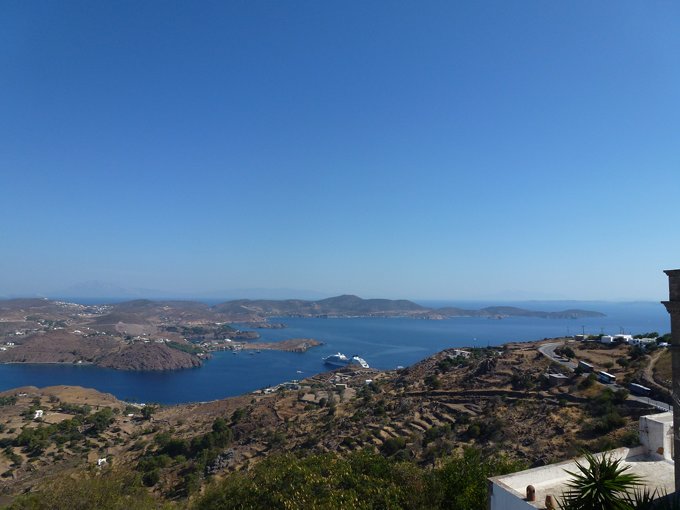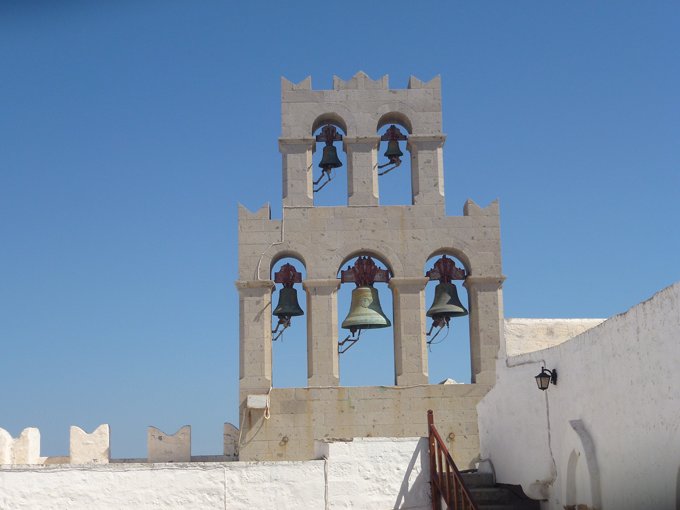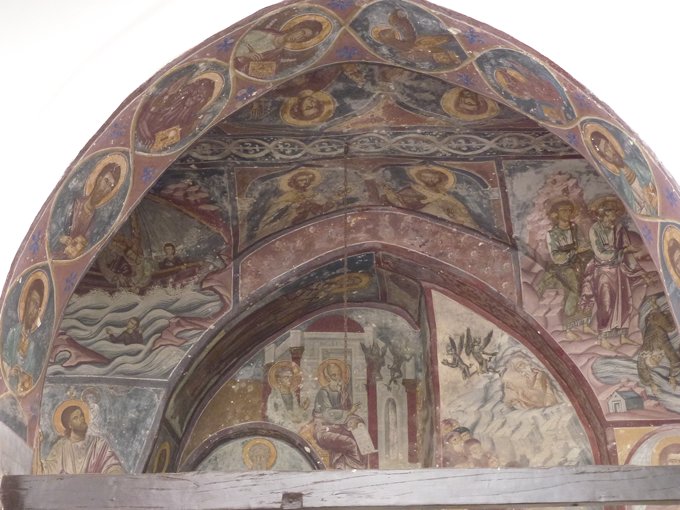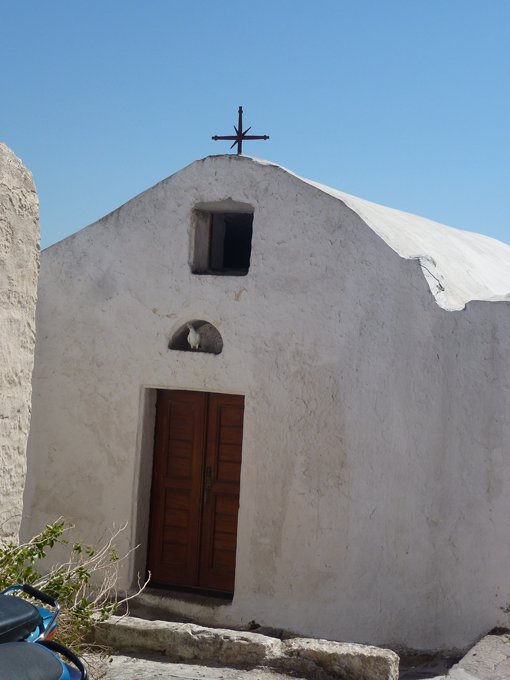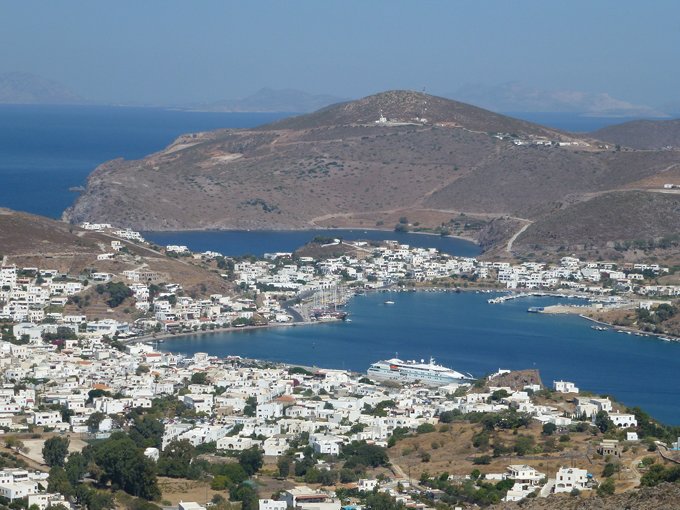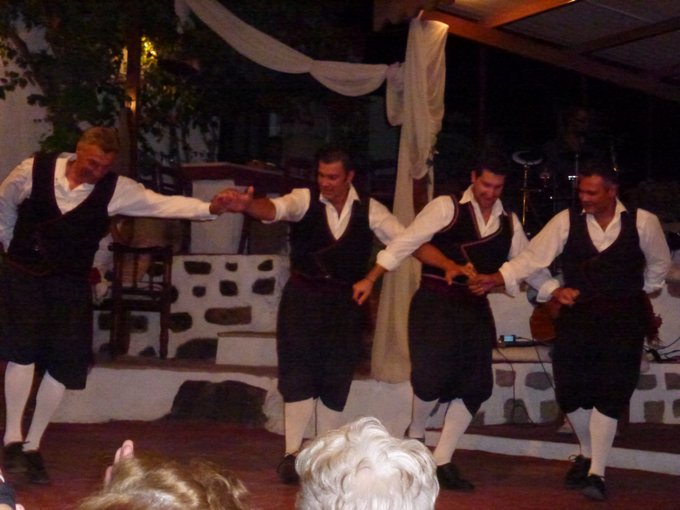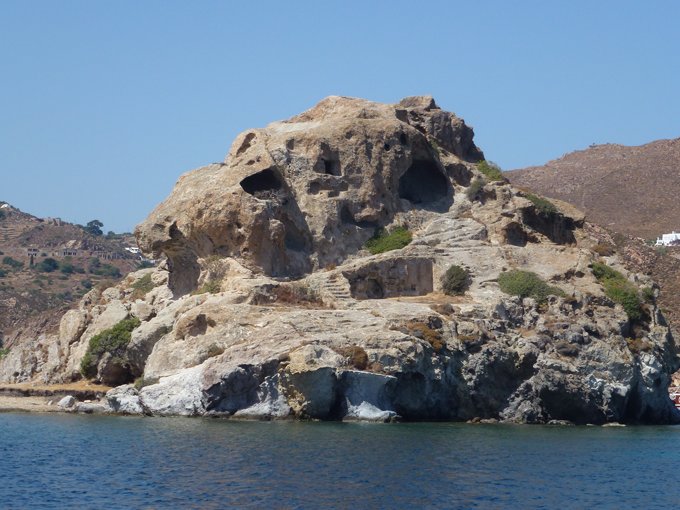37:19.71N 26:32.63E Skala, Patmos Island.

Tuesday, 10th
September, 2013.
The day started with wind blowing so we got the shopping on board and got ready to sail to Patmos from Samos. Once outside the harbour we let out the reefs and we were sailing along nicely heading for Patmos when Jim and Frank thought a little spinnaker would help as the wind got a little light. Twenty minutes to put it up, ten minutes of use until the wind nearly died and another ten minutes to get it down and back in the bag. At least it had been checked this season! With a little tweaking of the sails we were now catching up everyone who had left hours before us and leading the way into Skala. We have now crossed from the sailing area of Eastern Sporades to the Dodecanese which means twelve islands.
Patmos is a delightful island with lots of anchorages and attracts the cruise ships to enable them to visit the Monastery of St. John which looks like a castle overlooking the harbour. The 11th century monastery was founded in 1088 by a monk called Christodoulos to honour St. John the Divine who was the author of the book of Revelation. For centuries the island was the home of Saracen pirates until St. Christodoulos was granted permission to establish a monastery. It is one of the richest and most influential monasteries in Greece. Although it looks like a castle with towers and buttresses with fortified walls it was built to protect its religious treasures which now attracts thousands of pilgrims and tourists each year. Each year on Maundy Thursday as part of the Orthodox Easter celebrations the abbot of the monastery publicly washes the feet of 12 monks re-enacting Christ’s washing of His disciples’ feet before the Last Supper. The monastery is the second most holy site in Greece after Mount Athos.
With the Cruising Association members we walked up to the Monastery on Wednesday morning visiting the Cave of Apocolypse on the way where St. John saw the vision of fire and brimstone and dictated the book of Revelations to his disciple Prochoros. St. John is said to have heard the voice of God coming from the cleft in the rock. The rock is divided into three symbolising the Trinity. On view is the rock where the book of Revelation was written and the indentation where the saint is said to have rested his head. Unfortunately, no photographs can be taken inside and I was unable to take any pictures of the 12th century wall paintings and icons from 1596 of St. John and the Blessed Christodoulos.
Just below the monastery are three windmills which date back to 1588 of which two are working. One can produce flour at the rate of 42 kilos per every two hours and the other electricity and it is hoped the third one will be up and running very soon in order to produce all the electricity for the monastery.
The views at all times were beautiful as we wandered down the trail to Skala town.
In the evening we were taken by coach for a traditional Greek evening of food and dance. It was an excellent restaurant with well prepared entertainment. Most the ladies were up on the dance floor for at least one dance.
On Thursday we motored around to Grisko to anchor and swim. The Kallikatsous rock is perched on a sand spit and many say it looks like a cormorant but we could not see it. We could although see the hollowed out sections which are said to have been rooms made by 4th century monks or 11th century hermitage mentioned in the writings of Christodoulos.
